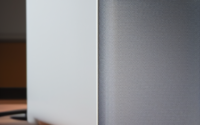The Evolution of PC Cases: Aesthetics and Functionality
The Evolution of PC Cases: Aesthetics and Functionality
Introduction
Over the years, personal computers (PCs) have undergone numerous advancements, both in terms of their internal hardware and overall design. In particular, PC cases have evolved dramatically in terms of aesthetics and functionality. This article takes a closer look at the journey of PC cases, exploring how they have transformed from bulky, utilitarian boxes to sleek and stylish works of art while still maintaining their core functionality.
The Early Days: Basic Enclosures
In the early days of personal computing, PC cases were nothing more than simple enclosures designed to house the various components of a computer system. They were typically made of heavy steel or plastic and featured boxy designs. Functionality trumped aesthetics during this period, with a primary focus on providing ample space for hardware components and ensuring adequate cooling. These cases often lacked any sort of visual appeal, as they were meant to be tucked away under desks or in computer rooms.
The Rise of Customization
As personal computers gained popularity and technology advanced, users began seeking ways to personalize their machines. This gave rise to the customization trend, where individuals started modifying their PC cases to reflect their unique personalities and taste. These modifications included adding custom paint jobs, side panel windows to showcase internal components, and even integrating LED lighting for added visual flair. Manufacturers soon caught on and started offering customizable case options, allowing users to select different colors, window types, and additional features.
Embracing Aesthetics: Design and Form
As the demand for visually appealing PC cases grew, manufacturers began prioritizing aesthetics in their designs. Sleek lines, curved edges, and elegant finishes became prevalent in case designs, allowing PCs to blend seamlessly with modern home and office environments. Additionally, the introduction of tempered glass side panels allowed users to display their high-end components and elaborate cooling setups, turning PC cases into works of art. RGB lighting also became popular during this era, enabling users to customize the lighting effects of their cases according to their preferences.
Functionality Meets Compactness
While aesthetics played a significant role in the evolution of PC cases, functionality remained essential. The demand for compact and portable computers gave rise to smaller form factors such as mini-ITX and micro-ATX. Compact cases became a popular choice for users who wanted a powerful PC without sacrificing space, making them ideal for gaming enthusiasts and professionals with limited desk real estate. These cases often featured clever space utilization techniques, such as modular designs, efficient cable management, and optimized airflow systems to maintain cooling efficiency in a smaller footprint.
Focusing on Cooling and Noise Reduction
As PCs became more powerful, heat management became a critical concern. PC case manufacturers began investing significant resources into designing innovative cooling solutions to ensure optimal performance and longevity of components. This led to the introduction of advanced fan placement options, liquid cooling compatibility, and improved ventilation systems. Additionally, reducing noise levels became a priority, with the integration of sound-damping materials and strategically placed noise-canceling foam to muffle fan noise and vibrations.
The Future: Smart and Sustainable Designs
Looking ahead, the future of PC cases promises even more exciting developments. The rise of smart technology has already begun to influence PC case design. From integrated fan controllers to RGB lighting synchronization with voice assistants, manufacturers are finding new ways to enhance user experience through seamless integration with smart home ecosystems. Sustainability is also on the horizon, as eco-friendly materials and energy-efficient designs become increasingly important. Expect to see more use of recycled materials, improved power management, and modular components that promote easy repair and upgradability.
Conclusion
The evolution of PC cases has come a long way, transitioning from basic enclosures to aesthetically pleasing and functionally advanced designs. As technology continues to advance, the focus on personalization, compactness, cooling, and sustainability remains paramount. The future holds even more exciting possibilities as PC case manufacturers continue to push the boundaries of innovation, ensuring that the heart of every computer system not only performs flawlessly but also looks stunning.



